I've had the camera out again since the slant-to-starter thread, this time making agar slants.
Agar slants are an easy way to store yeast strains.
Once inoculated with a yeast sample and refrigerated, agar slants should keep the yeast viable for months or longer.
While there is noticeable autolysis after a few months, I usually reculture slants after 1 year, others have suggested they recultured viable yeast from slants up to 4 years old.
Here is what we'll need to make our agar slants.
Clean test tubes/vials, (1.030-1.040)wort/nutrient mix, agar-agar (from an Asian supermarket), Pyrex jug and a syringe.
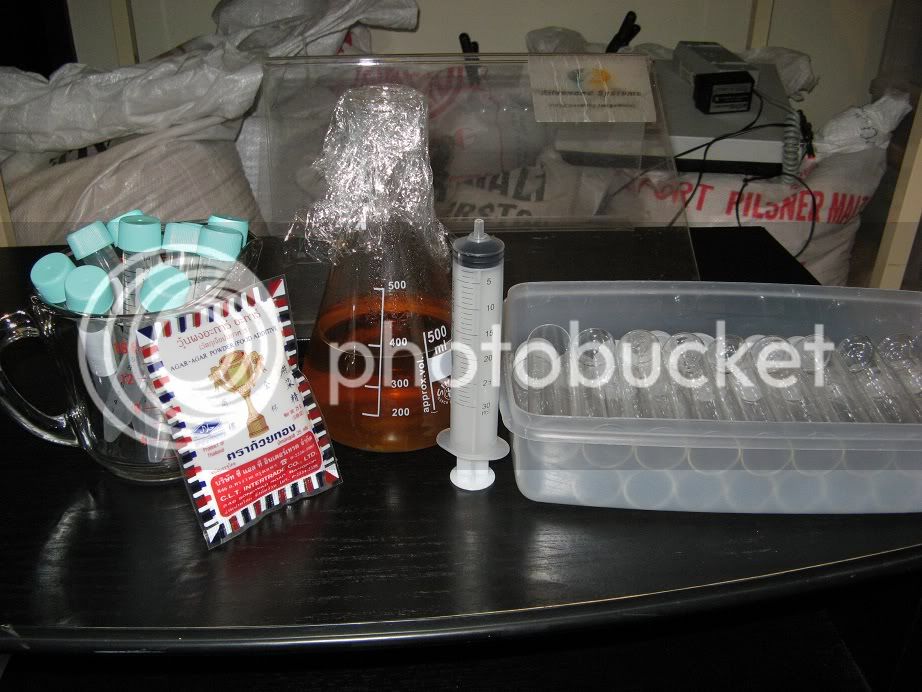
Most slants I make are in glass 50ml test tubes, using 10ml of wort/agar in each, but for the the smaller 15ml plastic test tubes I use 5ml wort/agar.
250ml wort will make 20 larger slants (allowing for some losses).
After measuring the required amount of wort into the Pyrex jug (add some yeast nutrient if you have some), add the agar agar powder.
For the powdered agar-agar shown in the above picture, I use 1.5% agar, which works out to be about 3.75g of Agar in 250ml wort.
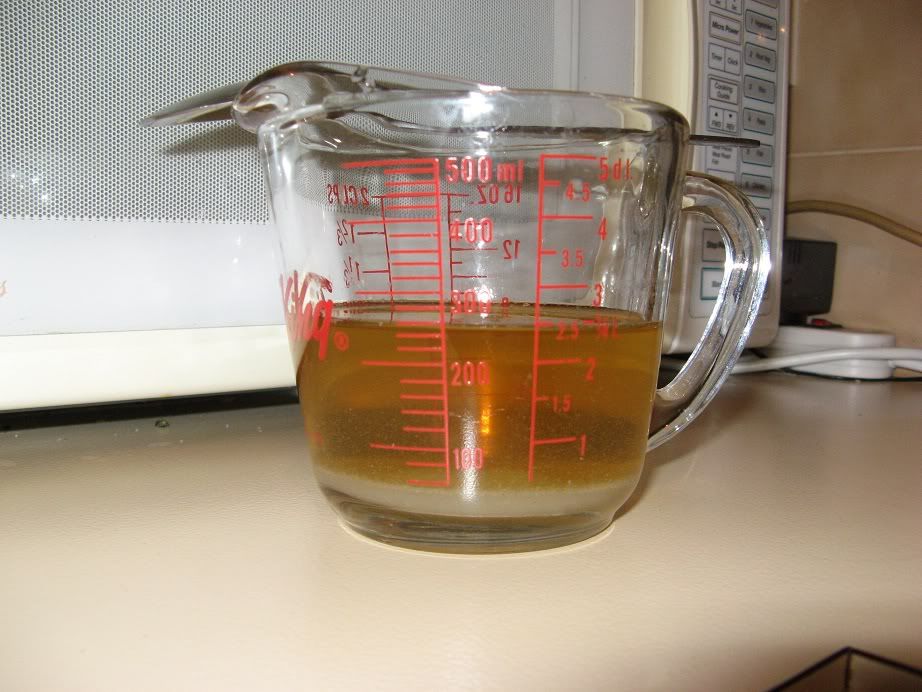
The agar will not dissolve in the cold liquid, so you need to bring it to the boil, I do this in the microwave.
I microwave the wort/agar for about 30 secs on high, then stir, and repeat the process until it just comes to the boil.
When it gets to the boil the agar will dissolve into the wort and the mixture will be very runny:
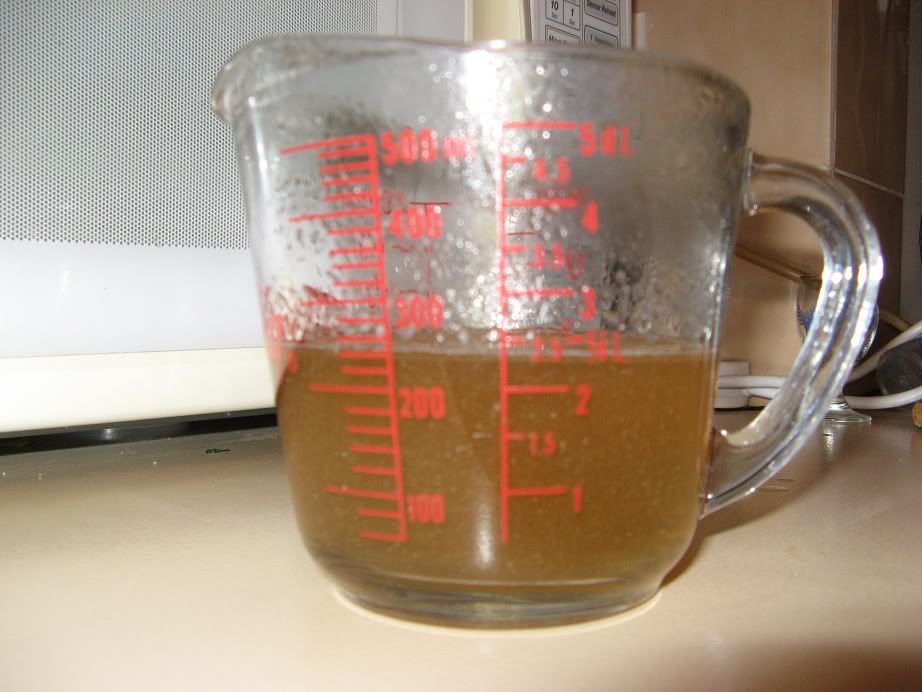
While it is still hot, measure the wort/agar mix into the test tubes, try not to drip the wort/agar mix down the sides of the tubes if you can help it.
You could tip it in from the jug but using a syringe makes it much easier:
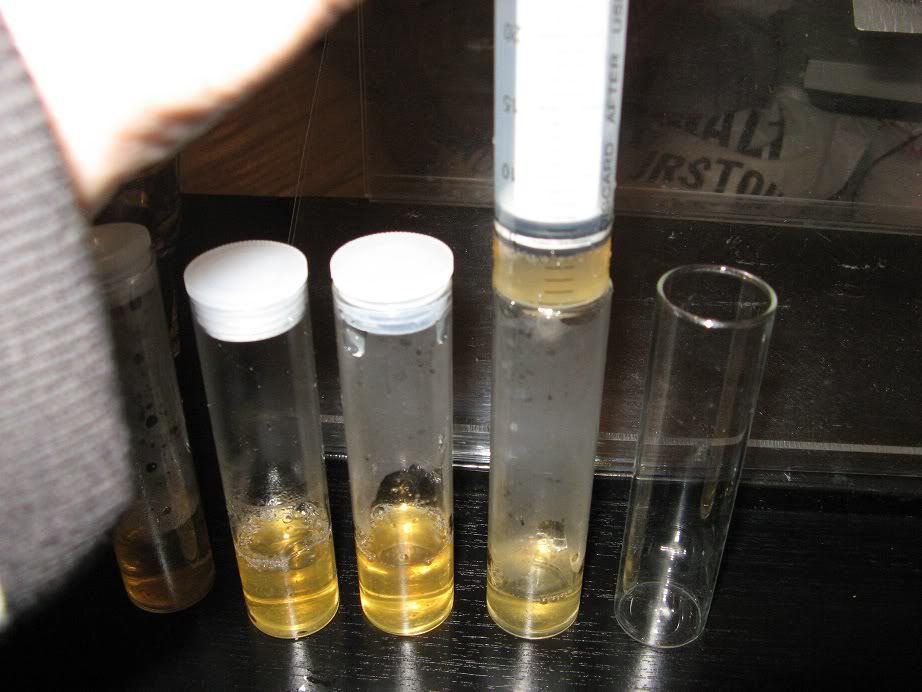
The reason I prefer agar over gelatin (which also works) is that agar exhibits hysteresis, meaning that it melts at ~85C but it does not solidify until it cools to ~40 C which means its easy to work with in liquid form, but once it has cooled and solidified it will not melt again (until it's heated over ~85C).
Now we need to sterilize our slants.
An autoclave is the best way to do this, but not too many people have one at home, so most people sterilize our slants by moist heat in a pressure cooker or similar.
I have a (99c Ebay) pressure cooker, so I load the slants in that and 'boil' them for about 30mins at 15PSI.
Before I had the pressure cooker, I just put a couple of phone books ontop of my mini-mash-pot and did the best I could and never seemed to have any problems, but to be more pedantic I should have used the Tyndallization process:
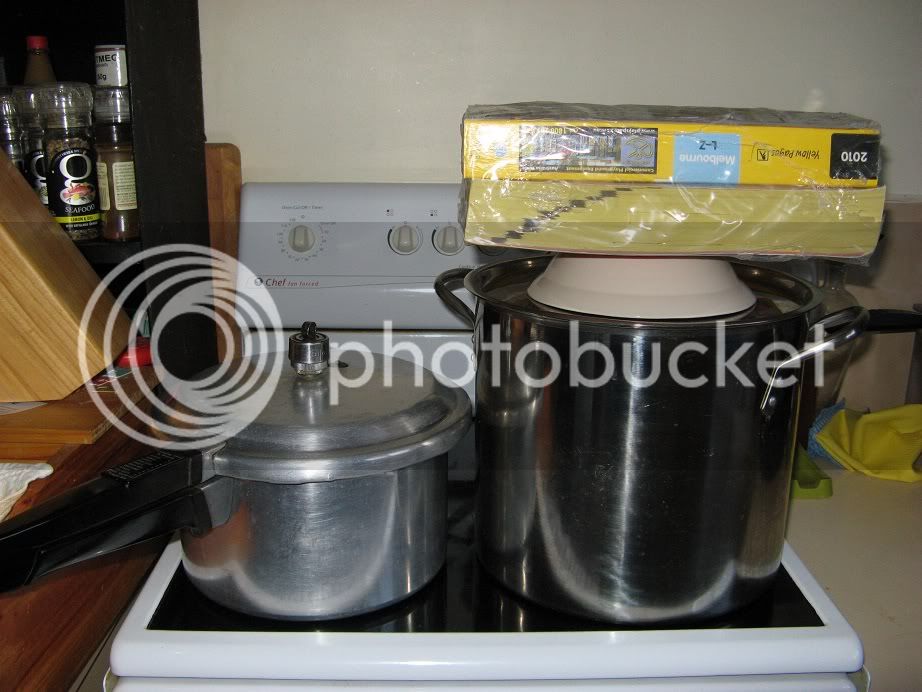
After the slants have been 'autoclaved', let them cool enough so you can handle them safely, but not enough so they start to solidify.
Take them out of the 'autoclave' and lay them on a slanted surface:
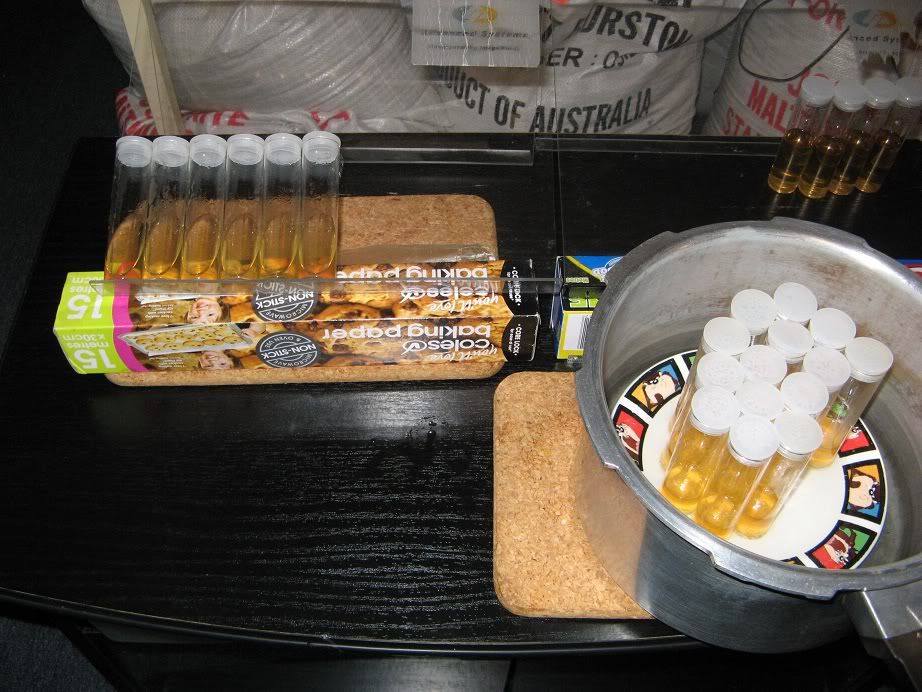
Any slanted surface will do, cardboard box, tray, etc, but try to maximize the slope surface by adjusting the angle they are on:
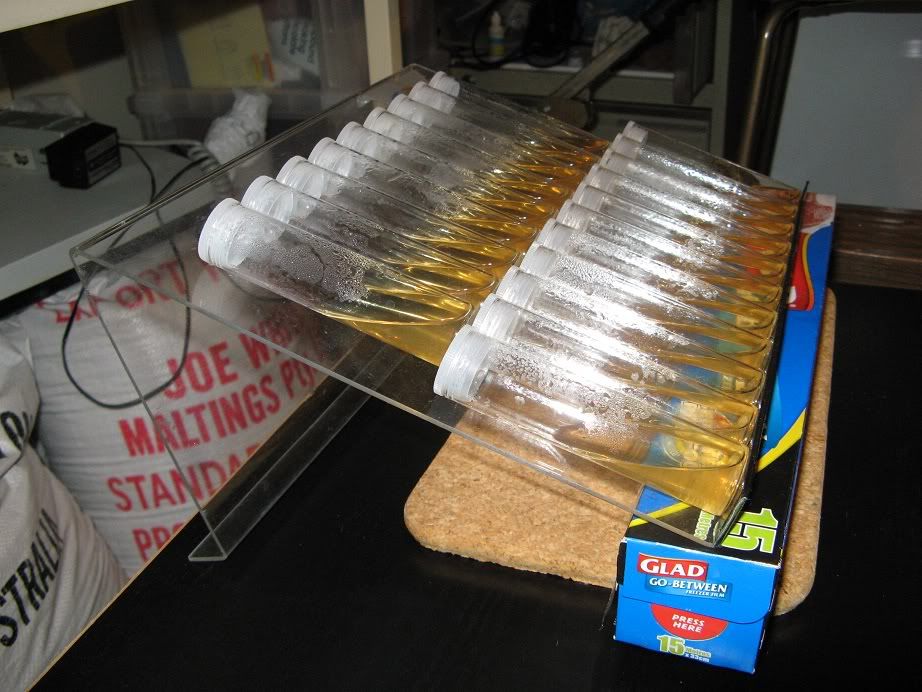
Cover with a clean tea towel (or similar) and let them cool (only takes about 1 hour now its winter), and they should solidify like so:
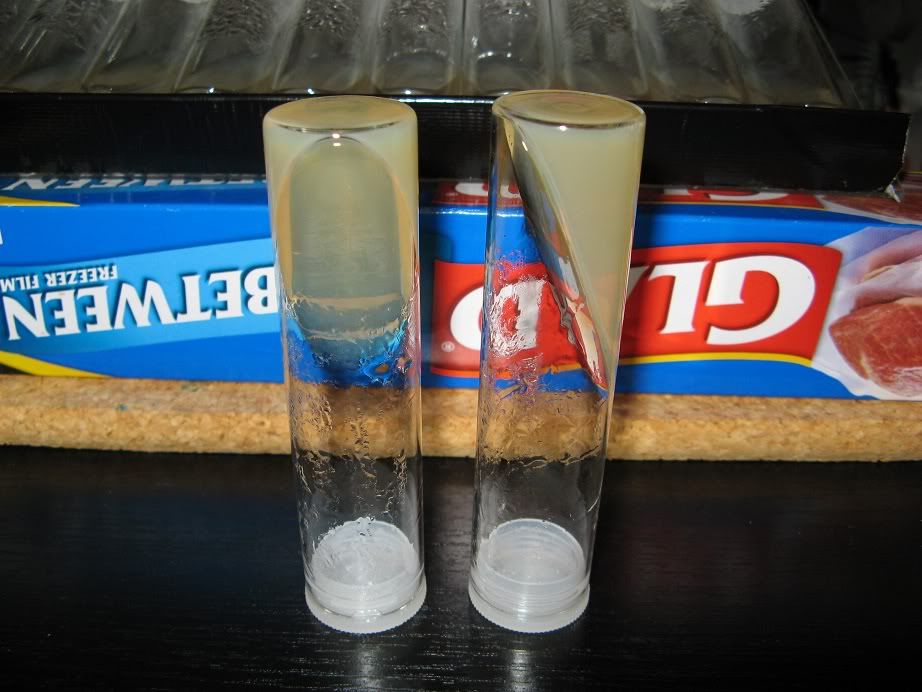
When you fill, autoclave and lay out the slants try not to shake, tilt, or mix the slants because the wort/agar will coat the side of the tubes and make things messy, if you treat them gently you should get nice clean slopes to work with. If possible leave the caps on losely while 'autoclaving' and cooling the slants, that way there should not be too much moisture buildup inside the slants.
Since the slants should be sterile there is no need to store them in the fridge, I usually put mine into a plastic container - just to keep any contaminants off - until I need to use them. It's also not a bad idea to use tape or parafilm to seal the caps - again just to ensure they do not get contaminated.
I use the 50ml glass push-top test tubes because I have lots of them, and I got them cheap, however if I was going to buy more tubes to make slants with, I'd get screw top polypropylene vials like these ones:
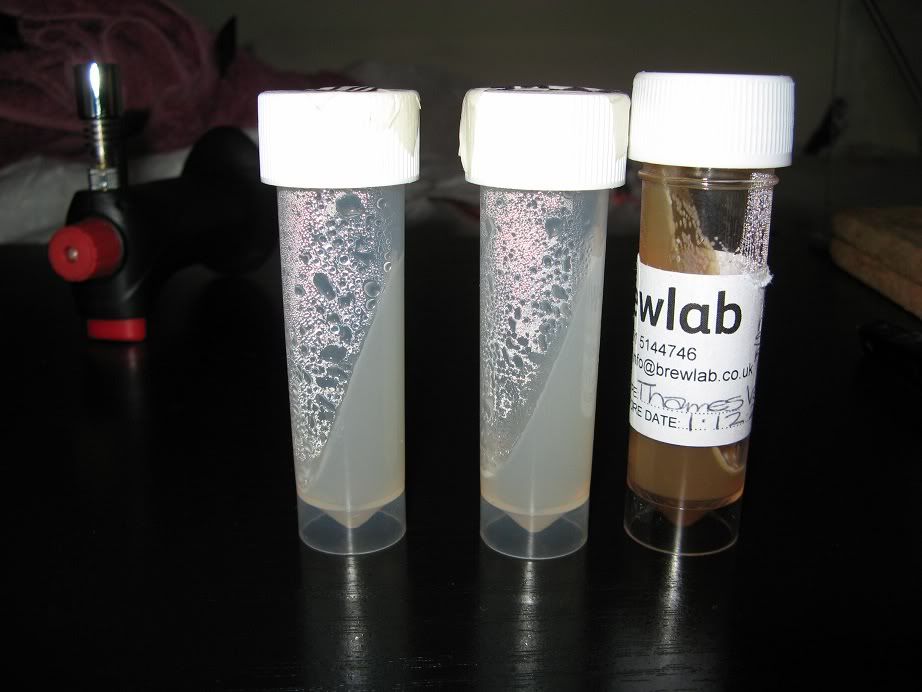
Agar slants are an easy way to store yeast strains.
Once inoculated with a yeast sample and refrigerated, agar slants should keep the yeast viable for months or longer.
While there is noticeable autolysis after a few months, I usually reculture slants after 1 year, others have suggested they recultured viable yeast from slants up to 4 years old.
Here is what we'll need to make our agar slants.
Clean test tubes/vials, (1.030-1.040)wort/nutrient mix, agar-agar (from an Asian supermarket), Pyrex jug and a syringe.

Most slants I make are in glass 50ml test tubes, using 10ml of wort/agar in each, but for the the smaller 15ml plastic test tubes I use 5ml wort/agar.
250ml wort will make 20 larger slants (allowing for some losses).
After measuring the required amount of wort into the Pyrex jug (add some yeast nutrient if you have some), add the agar agar powder.
For the powdered agar-agar shown in the above picture, I use 1.5% agar, which works out to be about 3.75g of Agar in 250ml wort.

The agar will not dissolve in the cold liquid, so you need to bring it to the boil, I do this in the microwave.
I microwave the wort/agar for about 30 secs on high, then stir, and repeat the process until it just comes to the boil.
When it gets to the boil the agar will dissolve into the wort and the mixture will be very runny:

While it is still hot, measure the wort/agar mix into the test tubes, try not to drip the wort/agar mix down the sides of the tubes if you can help it.
You could tip it in from the jug but using a syringe makes it much easier:

The reason I prefer agar over gelatin (which also works) is that agar exhibits hysteresis, meaning that it melts at ~85C but it does not solidify until it cools to ~40 C which means its easy to work with in liquid form, but once it has cooled and solidified it will not melt again (until it's heated over ~85C).
Now we need to sterilize our slants.
An autoclave is the best way to do this, but not too many people have one at home, so most people sterilize our slants by moist heat in a pressure cooker or similar.
I have a (99c Ebay) pressure cooker, so I load the slants in that and 'boil' them for about 30mins at 15PSI.
Before I had the pressure cooker, I just put a couple of phone books ontop of my mini-mash-pot and did the best I could and never seemed to have any problems, but to be more pedantic I should have used the Tyndallization process:

After the slants have been 'autoclaved', let them cool enough so you can handle them safely, but not enough so they start to solidify.
Take them out of the 'autoclave' and lay them on a slanted surface:

Any slanted surface will do, cardboard box, tray, etc, but try to maximize the slope surface by adjusting the angle they are on:

Cover with a clean tea towel (or similar) and let them cool (only takes about 1 hour now its winter), and they should solidify like so:

When you fill, autoclave and lay out the slants try not to shake, tilt, or mix the slants because the wort/agar will coat the side of the tubes and make things messy, if you treat them gently you should get nice clean slopes to work with. If possible leave the caps on losely while 'autoclaving' and cooling the slants, that way there should not be too much moisture buildup inside the slants.
Since the slants should be sterile there is no need to store them in the fridge, I usually put mine into a plastic container - just to keep any contaminants off - until I need to use them. It's also not a bad idea to use tape or parafilm to seal the caps - again just to ensure they do not get contaminated.
I use the 50ml glass push-top test tubes because I have lots of them, and I got them cheap, however if I was going to buy more tubes to make slants with, I'd get screw top polypropylene vials like these ones:






